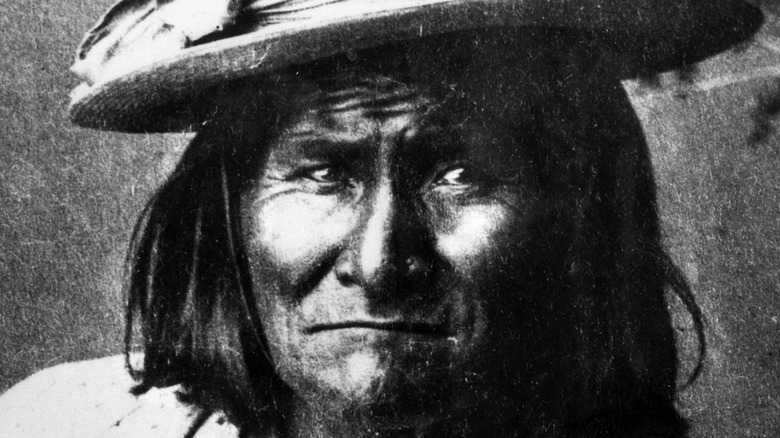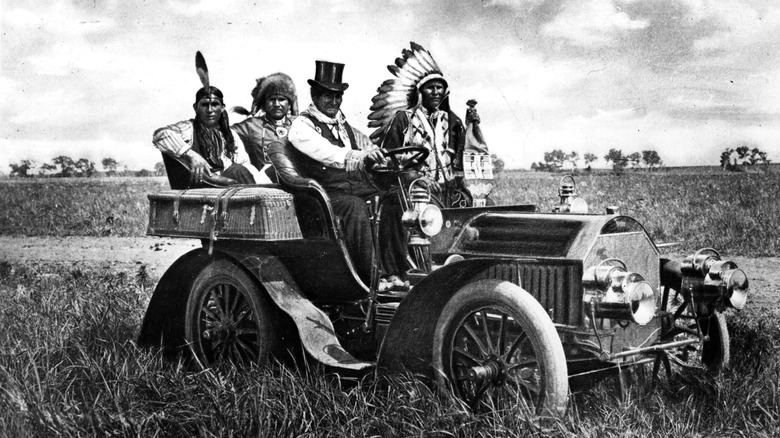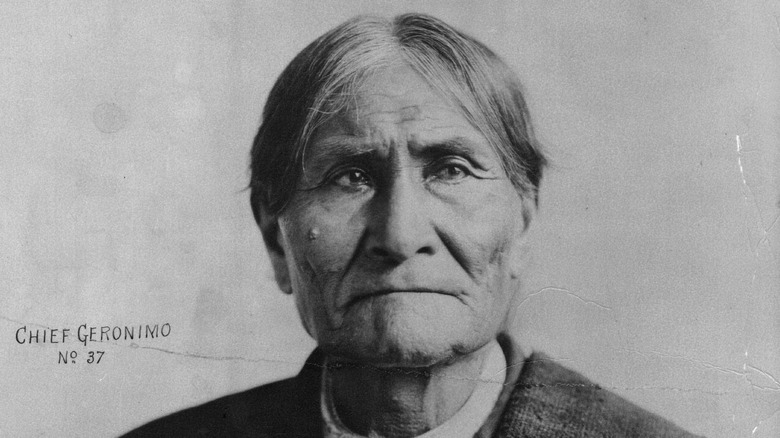The Tragic Death Of Geronimo's Wife And Children
The Apache leader and medicine man, Geronimo, is perhaps the most recognizable name in Native American history. If school children don't learn much about Indigenous people as a whole in U.S. schools, most are taught about the legendary Geronimo. His name alone is synonymous with a battle cry, one used most notably by paratroopers jumping from planes during World War II.
What's not so well-known about the famous warrior, though, and what historians say set him on his path of bitter, lifelong resistance against Mexico and U.S. incursion into Apache territory, was the violent massacre of his family in 1851. He was never the same, in fact so much so, it changed the path of his life and sent him in a new direction: One of complete and utter revenge (via Biography).
Geronimo was born in 1829 and lived a relatively quiet life until he turned 30. In 1858, he led a trading expedition south from the Mogollon Mountains, a region that now encompasses central Arizona, west-central New Mexico, western Texas and northern Sonora and Chihuahua, into Mexico (via Smithsonian).
Geronimo's family is massacred
His team set up camp and left for Casa Grandes to take care of business. When they returned, they found their families, including wives, children, and elderly parents, had been slaughtered by Mexican soldiers. The grief-stricken Geronimo lost his wife, three small children, and his mother in the massacre (via Smithsonian). "I stood until all had passed, hardly knowing what I would do," he remembered in his 1905 memoir, "Geronimo: The True Story of America's Most Ferocious Warrior." "I had no weapon, nor did I hardly wish to fight, neither did I contemplate recovering the bodies of my loved ones, for that was forbidden. I did not pray, nor did I resolve to do anything in particular, for I had no purpose left."
He returned home where, in keeping with Apache tradition, he burned his family's possessions and headed into the wilderness. One day he heard a voice and the voice told him, "No gun will ever kill you. I will take the bullets from the guns ... and I will guide your arrows."
Geronimo avenges his family
It was then that Geronimo swore vengeance against the Mexican military and set out with a small band of 200 Apaches. He spent the next 10 years tracking down and killing every Mexican involved in the attack on his family.
He also exacted a painful revenge against the Mexican military, avenging his family and continuing to raid towns and military camps for another decade (via Biography). "I do not know how many ... some of them were not worth counting," he later wrote (via History). Known as a fearless leader by the 1870s, Geronimo continued his battle, this time against the American military, but in 1886 he finally surrendered and was treated as a U.S. war criminal until his death at Fort Sill in Oklahoma in 1909. Throughout the bloody and violent battles, until the end, the renowned Native American warrior never forgot one of his greatest losses, that of his young family and his mother. It changed his life and turned him into one of the most feared warriors in U.S. history.


